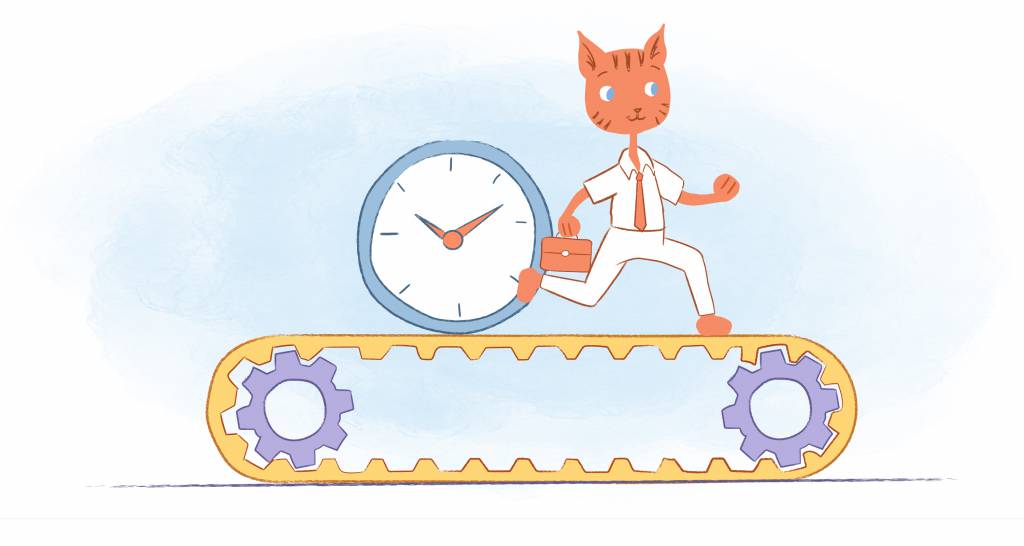

You know you want to start building a healthier, more active lifestyle, but life keeps getting in the way. You should go for that walk, take that dance class, and start doing weight-bearing exercises to fend off bone loss. You have the gym membership, the treadmill, and the garage full of free weights — but you just can’t seem to get started.
One of the biggest hurdles to making more movement happen is finding or making the time. You’re a busy person, and work, family obligations, and other responsibilities always find a way of taking precedence. Maybe you’re also managing mental health issues or neurodivergence, which can make it difficult to remember or get motivated to work out.
In order to consistently make exercise fit into your life, please do what you can to make it second nature. Movement should fit so easily and seamlessly into your day that it’s almost easier to do it than to skip it. But that doesn’t come automatically: you have to start by being intentional, and carefully carving out the time. Here are some ways you can use calendars and scheduling tactics to weave more movement into your daily routine.
Make it a Priority
First, you need to start treating exercise like an absolutely unmissable meeting with a boss or big-deal client. You wouldn’t sleep through, casually postpone, or make excuses to skip a planned sales call with a multi-million dollar prospect. And, in the grand scheme of things, taking care of your body is way more important than landing that deal.
To make your workout routine just as much of a priority, schedule it as you would any other meeting. Use a scheduling tool like Calendar, Microsoft Calendar, or Google Calendar to slot exercise into your day, then stick to it. You can also use these platforms to set reminders or invite friends or coworkers to join you for a workout. Motivational speaker Tony Robbins suggests setting an exercise alarm on your phone so that if you’re in a meeting, you can say, “Gotta run!”
Ideally, you should schedule your exercise in the same calendar you use for work, family, and other personal or social events. Keeping your work, personal, and other goals and appointments all in the same place can help you avoid accidentally double-booking. Most calendar apps and programs will let you hide event details to make selected activities and appointments private. Your coworkers don’t always need to know it’s Zumba day (or that you’re at the gyno’s office).
One way to get a good sense of whether you’re on track with your goals is to color-code your activities. Making all your exercise blocks one color provides an instant visual cue to how much space movement takes up in your life. Those giant splotches of green or yellow across each month can quickly tell you whether you’re moving enough or working too much.
Let Each Moment Count
You don’t have to spend two grueling hours at the gym to see positive results from regular physical activity. Research shows that, for adults over 40, just ten minutes of activity could prevent over 100,000 deaths yearly. Of course, any more exercise beyond that can make even more of a measurable health difference.
The point is, you don’t have to do all your exercise at once, and it doesn’t need to be extreme. Small changes like taking the stairs to your office or walking around the block after lunch add up. For improved strength, simple bodyweight exercises like squats, push-ups, or chair dips are easy to work in between meetings. For cardio, try a set of jumping jacks or a burst of jogging.
Getting the whole family or office involved can make it easier to work in these workout moments. Seeing others around you get excited for a workout makes you want to jump in and do the same. Some companies work with apps that encourage employees to compete for exercise points. But simply sharing the excitement with others is often more than enough motivation.
At the Calendar offices, one staff member put kettlebells all around the office as a reminder to do different exercises. Whenever he sees them, “he stops and does these figure-eight exercises to whittle the waist,” says Calendar managing editor Deanna. “A couple hours later he does an arm exercise. We all jump up and do something. It’s working for all of us!”
Make it as Convenient as Possible
One of the reasons this little kettlebell trick works is that it’s a constant visual reminder to exercise. Another reason is it makes it incredibly convenient to exercise because the equipment is already there. Along these lines, you can try putting a pair of sneakers next to your desk to encourage you to walk. Or, try going to bed with all your gym clothes for the morning already laid out.
Getting your clothes and shoes ready can also help you overcome another barrier to exercising: poor time management. People who struggle with time management often have difficulty understanding how long it takes to complete a task. They may calculate enough time to drive to the gym and exercise. But they may not factor in the time it takes to change, shower, or eat something afterward.
To more effectively schedule exercise into your day, schedule 10-15 minute buffers between meetings, activities, and tasks. You don’t necessarily need to mark these on your calendar; leave some gaps between blocks. These buffers ensure you have enough time to get to any exercise destination. They also give you many extra 10-minute chunks to work in movement moments.
Another way to make exercise more convenient is to make it fully a part of what you’re already doing. Instead of exercising between or on the way to meetings, exercise during them — if your circumstances allow. If you work from home, you can take a call or join a meeting from the treadmill. In the office, encourage your coworkers to hold walking meetings.
Start Where You Are — and Build On What You Know
Successfully incorporating exercise into your lifestyle should be a long, gradual road of small improvements. Pushing yourself too hard right away will likely lead to injury, pain, and disappointment. It’s much more effective to be patient and gentle with yourself as you make slow, steady progress toward your goals.
Start by taking a realistic audit of where you already are in your fitness journey and where you want to go. Then, find the next logical step in your journey and a reasonable way to get there. For example, let’s say you want to run a marathon, but the best you can do now is a 30-minute walk. You’re 45 years old, you have bad knees, and you only gave up smoking last year.
Instead of throwing yourself headfirst into a rigorous marathon training group, start with a program like Couch to 5K. This program gradually levels you up from walking for twenty minutes to running for thirty. You’re taking something you can do pretty quickly and incrementally, building up stamina. It’s up to you whether you want to do the program through an app or with a group.
With any workout, be gentle with your joints and ligaments, and build in movements that improve flexibility. Aim to stretch before and after exercise to avoid injury (don’t forget to schedule the extra minutes!). But stretching isn’t just a support system for all the other exercises you do. Stretching on its own also has powerful benefits for your physical and mental health. Tony Robbins says, “Our physical state directly affects our mental state.”
Seriously, Go Slow
Building a new exercise habit takes time and effort, but once you get started, inertia takes care of itself. Just make sure to start with realistic changes so you don’t burn out or get yourself hurt. If you’re socially motivated, look to others around you to help you stay on target. Wherever possible, look for ways of moving that are easy and enjoyable additions to your day. It’s not about exactly what you do but how consistent you are. So make exercise a clear priority, and you’ll get there before you know it.
Featured Image Credit: Photo by Andrea Piacquadio; Pexels; Thank you!











Angela Ruth
My name is Angela Ruth. I aim to help you learn how Calendar can help you manage your time, boost your productivity, and spend your days working on things that matter, both personally and professionally. Here's to improving all your calendars and becoming the person you are destined to become!